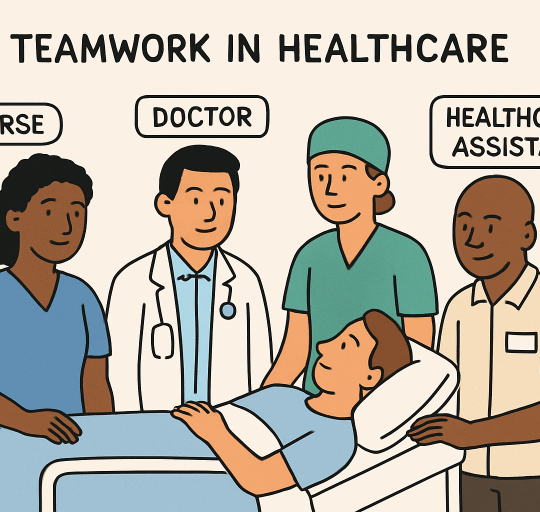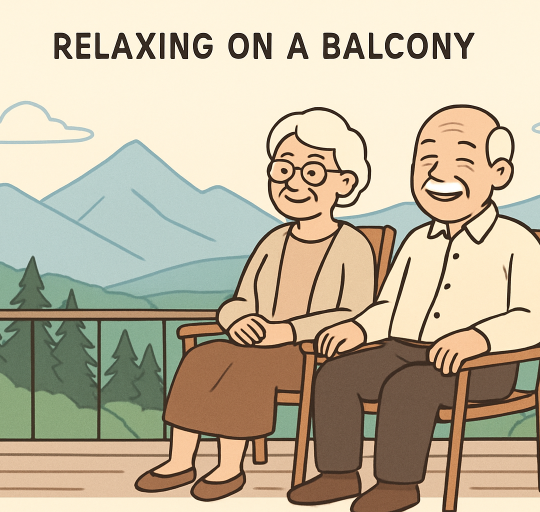Something’s shifted in how families approach senior care. Walk into any coffee shop and chances are someone’s talking about their mom or dad aging at home with help, not moving to a facility. The numbers back this up—more families are choosing to bring professional care into the home rather than moving their loved ones out of it.
This isn’t just sentiment talking. There are real, practical reasons behind this trend that go way beyond emotions.
The Comfort Factor Nobody Can Fake
There’s something about familiar surroundings that facilities just can’t replicate, no matter how nice they are. Seniors sleep in their own beds, see their own photos on the wall, and know where everything is without having to relearn a new environment. That matters more than most people realize, especially when cognitive changes start happening.
The stress of relocation hits older adults harder than we’d expect. Medical research shows that moving to an unfamiliar place can trigger what’s called “transfer trauma”—confusion, anxiety, even physical decline. Staying home sidesteps all of that. The coffee cup is in the same cabinet, the neighbor still waves from across the street, and the dog doesn’t have to go anywhere either.
What the Money Actually Shows
Here’s where it gets interesting. Most families assume facilities are the more affordable option because of how the costs get presented. But when everything gets added up—the base rate, the care level surcharges, the “community fees,” and all those extras that aren’t included—home care often comes out ahead.
A typical assisted living facility runs between $4,000 and $6,000 monthly for the basic package. That sounds straightforward until the bills start arriving. Need help with medications? That’s extra. Require assistance with bathing more than twice a week? Additional charge. Memory care needs? That bumps things into the $6,000 to $8,000 range or higher.
Home care pricing works differently. Families pay for actual hours of service needed, which means someone who needs help four hours a day isn’t paying for round-the-clock staffing they don’t use. For many seniors who are relatively independent but need consistent support, home care services in Philadelphia and similar options provide a more economical solution without sacrificing quality.
The financial flexibility matters too. If your mother has a good week and needs less help, the schedule adjusts. If she’s recovering from a procedure and needs more intensive support, care ramps up temporarily without signing new contracts or changing rooms.

Control Stays Where It Belongs
Facilities run on schedules because they have to—there’s no other way to coordinate care for dozens of residents. Meals happen at set times, activities follow a calendar, and personal preferences take a backseat to operational needs. That’s not criticism, just reality.
Home care flips this entirely. Seniors who’ve eaten breakfast at 10 a.m. for forty years don’t suddenly have to adjust to a 7:30 dining room schedule. Night owls can stay night owls. Someone who’s always been private about bathing doesn’t have to navigate shared facilities or work around staff rotations that determine when personal care happens.
This control extends to the bigger decisions too. Families choose who provides care, can request different caregivers if personalities don’t mesh, and maintain oversight of daily routines. When concerns come up, there’s a direct line to address them rather than working through facility administration layers.
The Social Connection Reality
The social benefits of facilities get talked about a lot, and sure, they exist. But here’s what doesn’t get mentioned as often—not every senior wants or benefits from that setup. Some people are naturally social and thrive in group settings. Others have always been more reserved and find constant community interaction draining rather than energizing.
Home care doesn’t mean isolation. It means social interaction happens on terms that fit the person. Caregivers provide one-on-one companionship that’s actually pretty valuable. There’s conversation during meal prep, connection during daily activities, and someone noticing changes because they’re focused on one person rather than managing a whole floor.
Plus, staying home keeps seniors connected to their actual community. They can still attend their longtime church, see neighbors they’ve known for decades, and maintain friendships that predate any care needs. Those existing relationships often matter more than new ones formed in a facility setting.
When Things Get Complicated
The medical side of this deserves attention because it’s where a lot of assumptions fall apart. Families often think facilities provide more comprehensive medical oversight, but that’s not quite accurate. Most assisted living communities have limited medical staff—maybe a nurse on duty during certain hours, with aides handling most daily care.
Home care agencies employ trained caregivers who monitor health conditions, track medications, and spot concerning changes. They’re not just there for companionship and housekeeping (though that’s valuable too). When something seems off, they catch it early and alert family members or medical providers before small issues become big problems.
For seniors managing chronic conditions, home care offers more consistent monitoring because the same caregiver often works recurring shifts. They know what’s normal for that specific person and recognize when something’s changed—a crucial advantage over facility staff rotating through many residents.
The Family Dynamic Changes Too
This part doesn’t get enough attention. When a parent moves to a facility, family visits become just that—visits. There’s often an underlying stress to the interaction, a sense of checking in or making sure everything’s okay within a system families don’t fully control.
Home care keeps family members in their traditional role. Adult children can stop by without signing in, can be as involved in daily decisions as they want to be, and maintain the parent-child relationship without institutional barriers. Grandkids visit grandma’s house, not a facility. Holiday meals happen at the family table if everyone wants that.
The burden on family caregivers actually decreases rather than just shifting. Professional caregivers handle the physically demanding tasks and time-intensive daily needs, while family members can focus on being family—sharing meals, watching shows together, or just sitting and talking without the pressure of managing every aspect of care.
What This Trend Really Means
Something’s changed in how people think about getting older. The old playbook—wait until things get hard, then move to a facility—doesn’t feel like the only option anymore. Families are realizing that home can still be home, even when someone needs daily help. It takes planning and the right support system, but it’s working for more people than it used to.
Look, home care isn’t the answer for every situation. Some health conditions need what only a medical facility can provide. And honestly, some seniors do better in community settings where they don’t have to worry about maintaining a household. But for families trying to figure out the best path forward, bringing professional care into the home often checks the boxes that matter most—familiar surroundings, personalized attention, and keeping the life someone built mostly intact. That’s worth a lot.







